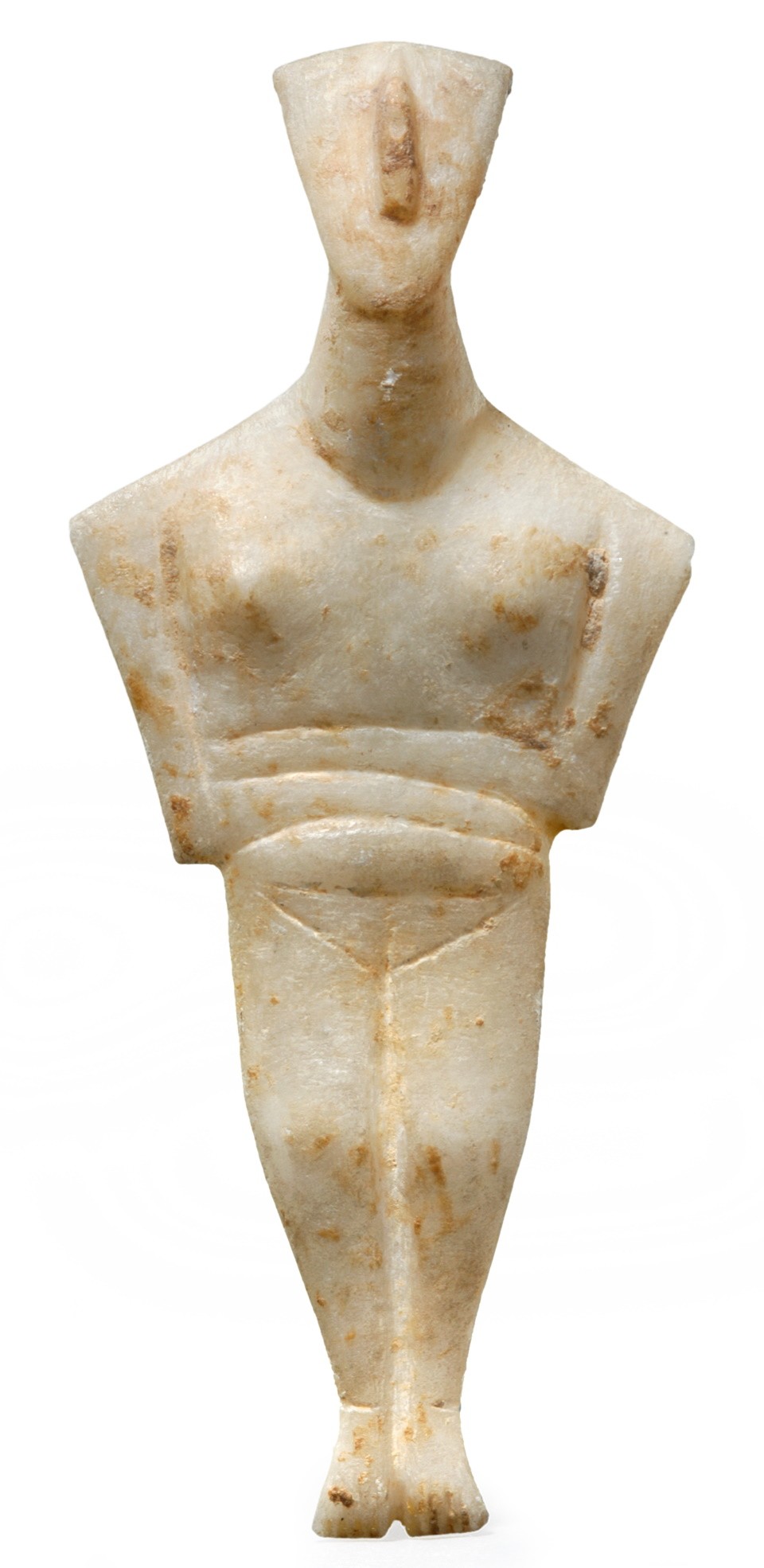Typical of the Cycladic culture in the period around 5000 BC to 1600 BC are the female marble figures with the arms folded in front of the chest and the legs stretched out. The significance of these statuettes has been discussed at length in archaeological research. Today, it is assumed that the figures 'accompanied' people during their lifetime and played an important role in ritual acts. Since most of the idols were found in graves, it can be assumed that funeral ceremonies for the deceased were part of the rituals associated with the cult.
This idol, which belongs to the Chalandriani type (2300-2200 BC), is at the beginning of this type group. It is characterised by an almost triangular body shape that tapers more and more from the shoulders to the feet. The decisive factor is a reduction in plasticity, which makes the figure appear flat and board-like.
A further reduction in plasticity makes the figure appear even flatter and board-like. The now shorter legs are no longer cubically rounded, but flat and rectilinear and separated by slight incisions. A focus on stereometric individual forms is noticeable: the face is triangular, the torso has an almost square contour. (AVS)
de









